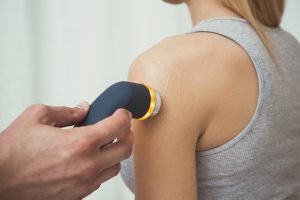
As I was thinking of a topic to write about for this blog post, the thought of patient safety immediately came to my mind.
A short while ago, I received a call from a local attorney to give a deposition on a disturbing medical malpractice case. In the case, the physical therapist had applied a hot pack to the patient’s low back. Following the hot pack application, the therapist continued with treatment. Later that day, the patient came into the emergency room with 2nd degree burns on her back. The cause of the burns was not necessarily from the hydocollator pack, but the documentation did not specify that a skin check was performed before or after treatment. The only potentially helpful statement in the record was “patient tolerated treatment without difficulty.” This circumstance was eye opening for me. I cannot count the number of times I have removed a hot pack from a patient, performed a skin check and decided the skin was normal, but did not document a normal skin check was found.
As a refresher, here are 5 common rules that you learned back in school. They are familiar to every therapist, but sometimes become so ingrained that they are forgotten or overlooked:
1. Be sure your patient’s skin is clean. When applying any physical agent, make sure that the patient’s skin is free from lotions or ointments. The use of any heating physical agent over a liniment such as Icy Hot has the potential to cause burns. This can be particularly important when applying conversion treatments such as Ultrasound or electrical stimulation. Any material can be driven through the skin using the same mechanism as phonophoresis or iontophoresis.
2. Be sure to have a clean physical agent. Just as the application of a physical agent on a patient with some form of contaminant on their skin can cause risk, the use of a physical agent that is not appropriately cleaned creates unnecessary patient risk. Many clinics have moved to single-use packages of ultrasound gel to minimize cross-contamination. Another potential cause of patient injury can be related to the re-use of electrical stimulation pads. Electrical stimulation pads can be reused on the same patient if they are stored on the same sheet and kept in a closed bag, but repeated use decreases conductivity leading to an increased risk of burns. Of course, pads need to be individualized to the patient as well.
3. Be sure to keep your machines calibrated. Most clinics are responsible for maintaining calibrated equipment, but mistakes can be made and it is good to look for the calibration tags on a regular basis. Additionally, hydrocollator pack heating machines should be warmed to at or near 160 ̊ A log of the temperature of the hydrocollator pack should be maintained as well.
4. In today’s environment, be sure to practice standard precautions and maintain appropriate patient separation or the use of appropriate PPE.
5. Documentation is everyone’s favorite part of physical therapy care. Most of us think to document for payment, but documentation of patient safety can also lead to better patient care. Additionally, good documentation is your best defense if you are ever accused of a problem involving your care.
In the case mentioned above, I’m not sure what the end result was as I was contacted for my opinion. I reviewed the documentation and gave my opinion based on the documentation. In my deposition, I stated that it is a common occurrence to not document a negative finding such as, “no burn was observed on skin check after removal of hotpack.” I personally don’t think burns from hotpacks are common, but it was not in the record.
About Kurt Gray:
Kurt Gray, PT, DPT is the Director of Clinical Education and an Assistant Professor of Physical Therapy within the Florida A&M University, Doctor of Physical Therapy program. He currently teaches courses in the use of physical agents during patient care and has over 30 years of experience in clinical practice in multiple outpatient, inpatient and worksite-based settings.
Dr. Gray is certified in the performance of Functional Capacity Evaluations as well as Ergonomic assessments. He is currently working on several research projects associated with forward head as it relates to cervical spine dysfunction. Dr. Gray received his Bachelor of Science in Physical therapy from Florida A&M University and his Doctorate in Physical Therapy from Utica College.
Dr. Gray also teaches his course, “Physical Agent Modalities” through Summit Professional Education. To learn more about this course, visit https://summit-education.com/.